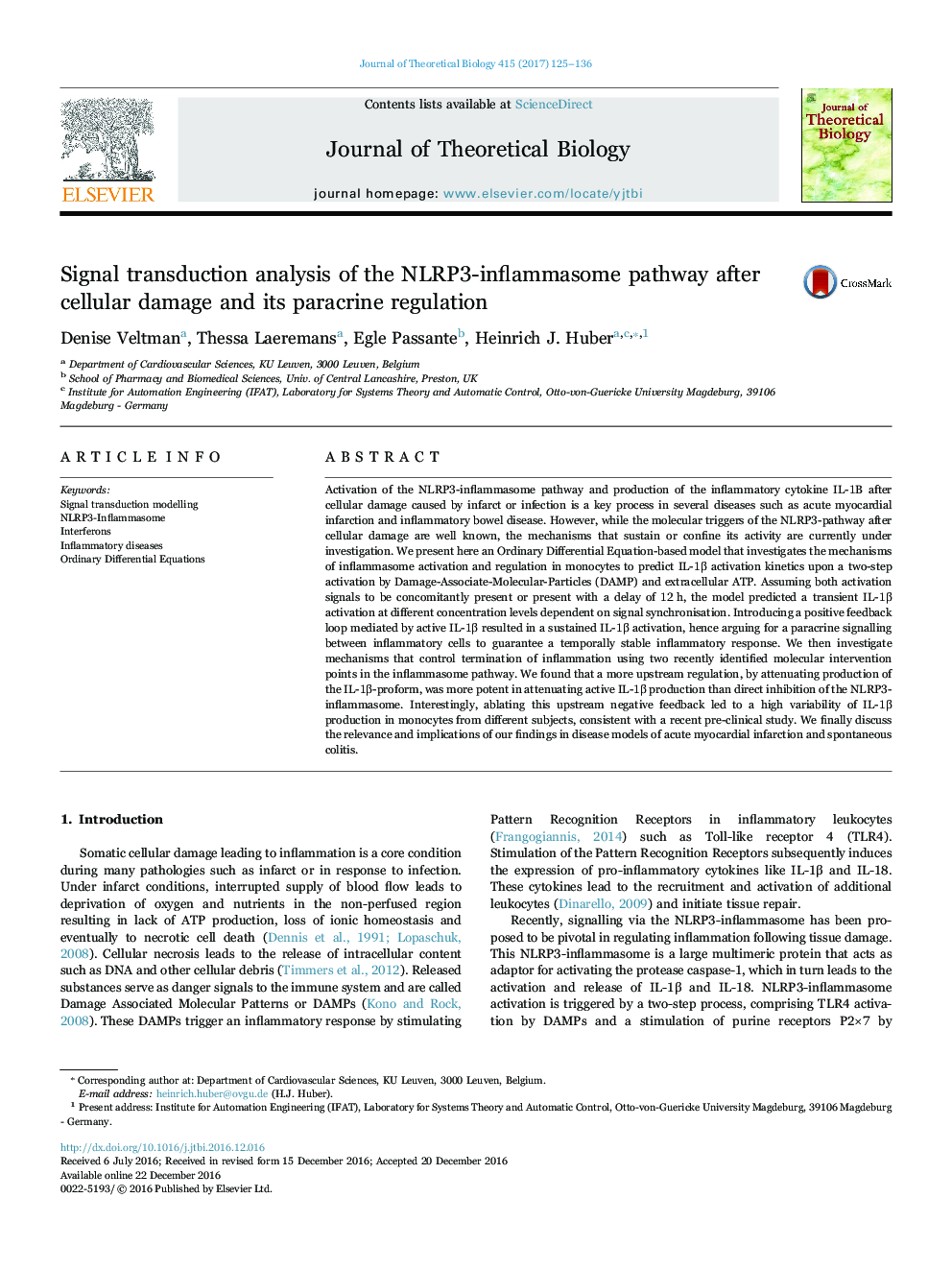| Article ID | Journal | Published Year | Pages | File Type |
|---|---|---|---|---|
| 5760109 | Journal of Theoretical Biology | 2017 | 12 Pages |
Abstract
Activation of the NLRP3-inflammasome pathway and production of the inflammatory cytokine IL-1B after cellular damage caused by infarct or infection is a key process in several diseases such as acute myocardial infarction and inflammatory bowel disease. However, while the molecular triggers of the NLRP3-pathway after cellular damage are well known, the mechanisms that sustain or confine its activity are currently under investigation. We present here an Ordinary Differential Equation-based model that investigates the mechanisms of inflammasome activation and regulation in monocytes to predict IL-1β activation kinetics upon a two-step activation by Damage-Associate-Molecular-Particles (DAMP) and extracellular ATP. Assuming both activation signals to be concomitantly present or present with a delay of 12 h, the model predicted a transient IL-1β activation at different concentration levels dependent on signal synchronisation. Introducing a positive feedback loop mediated by active IL-1β resulted in a sustained IL-1β activation, hence arguing for a paracrine signalling between inflammatory cells to guarantee a temporally stable inflammatory response. We then investigate mechanisms that control termination of inflammation using two recently identified molecular intervention points in the inflammasome pathway. We found that a more upstream regulation, by attenuating production of the IL-1β-proform, was more potent in attenuating active IL-1β production than direct inhibition of the NLRP3-inflammasome. Interestingly, ablating this upstream negative feedback led to a high variability of IL-1β production in monocytes from different subjects, consistent with a recent pre-clinical study. We finally discuss the relevance and implications of our findings in disease models of acute myocardial infarction and spontaneous colitis.
Related Topics
Life Sciences
Agricultural and Biological Sciences
Agricultural and Biological Sciences (General)
Authors
Denise Veltman, Thessa Laeremans, Egle Passante, Heinrich J. Huber,
